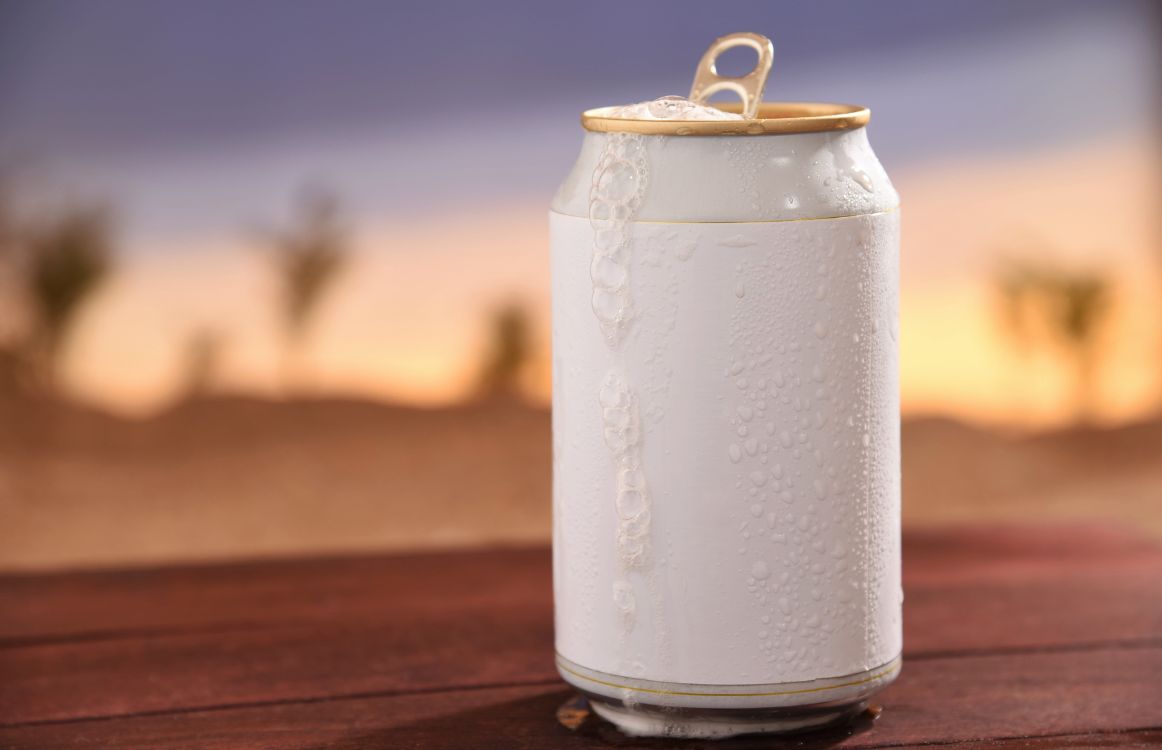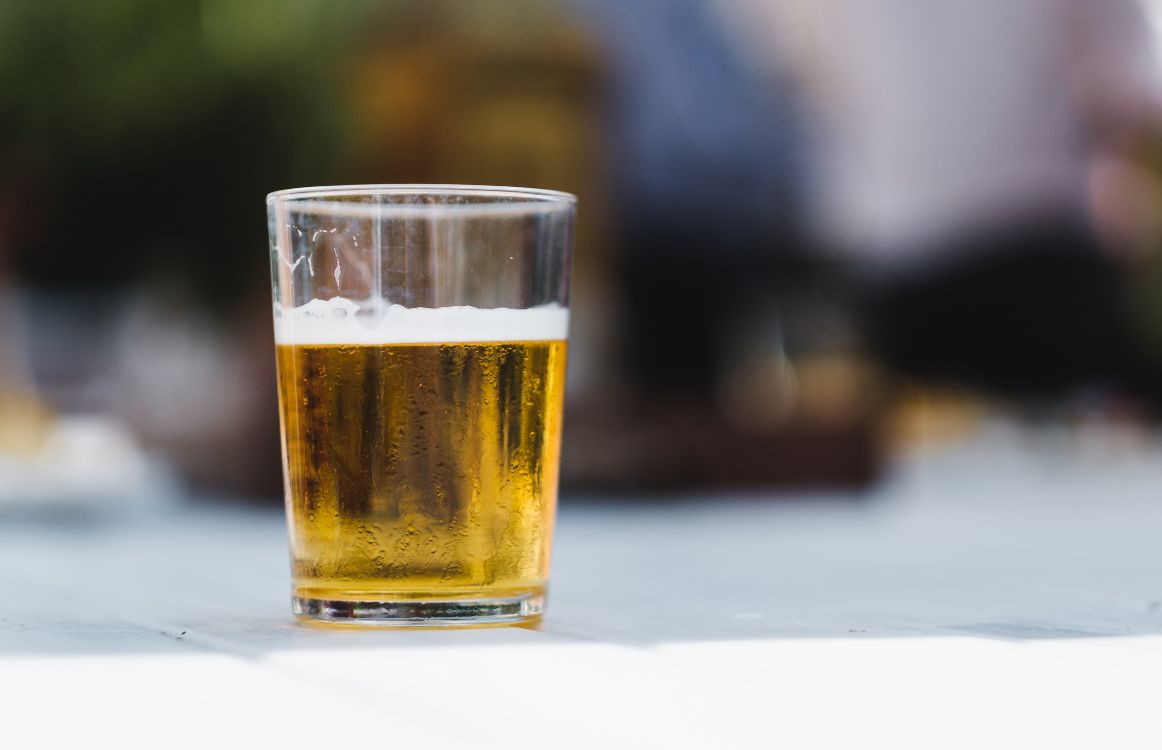Does Flat Beer Still Have Alcohol? You Still Have Options
You open a can of beer, only to find it has gone entirely flat. So now you’re left wondering, what are my options? Can I still drink it? Does flat beer still have alcohol? What am I supposed to do with it?
Fear not. Not only do we have all your answers, but we also have plenty of options for you and that flat beer.

How Beer Is Brewed
First, let’s get clear on what we’re dealing with here.
Beer, for those still unaware, is made through a process called fermentation.
It is a practice as old as time, or at least as long as humans have been settled into domestic life.
Grain is grown, harvested, and then malted or roasted.
The roasting process produces enzymes in the grain that makes the sugars locked inside more fermentable, which will help yeast produce more alcohol.
The grain is then ground or cracked in order to unlock all those sugars and expose them for the next step – boiling.
During the mash-in, or boiling process, the grain is brought to a rolling boil in order to get all those sugars out into what is now called the “wort.” The boil usually continues for anywhere from 30 to 60 minutes.
The wort is then allowed to cool down, and the grain is filtered out and “sparged,” meaning the grain is rinsed off to ensure all those fermentable sugars are utilized.
Now, hops are usually added, if they had not been added before the boil, to cut down on the sweetness of that sugary wort and add a level of bitterness and herbal flavoring that has become well known to beer drinkers the world over.
At this point, fermentation begins when the yeast is either added to the wort or allowed to naturally attract to the wort.
Once activated by the sugars in the wort, the yeast begins consuming all the sugars as a source of energy and then producing carbon dioxide and alcohol as a waste product.
When the beer is brewed in an airtight fermentation vessel, the carbon dioxide will remain in the beer. Though some will dissipate as beer is transferred between vessels for racking and secondary fermentation, most brewers will condition beer at the end by adding a bit more sugar and yeast, revving up the fermentation process slightly to create more carbon dioxide.
This approach is taken right before bottling, canning, or kegging, so drinkers will get that satisfying pffft sound when they crack their bottle.
But what if you don’t get that satisfying sound?
How Long Beer Will Stay Fresh
In general, you can expect beer to stay fresh for six months from the time you purchase it, which should be relatively soon after the date of bottling or canning.
The ideal conditions under which to keep your beer are in a cool, dark place. It does not have to be a refrigerator, but it can be. A basement or cool dark concrete room is perfectly acceptable.
What you want to avoid is warmth and especially light, which can skunk beer in clear bottles due to UV rays causing a chemical imbalance in the beer.
Once that 6-month mark has been met, your beer will slowly start to lose carbon dioxide, which naturally dissipates, even in a sealed can, bottle, or keg.
Once a beer has been opened, however, freshness typically lasts only an hour or so. Indeed, some beers are only fresh for 30 minutes once they have been opened.
After that, beer goes flat.
The longer out from freshness a beer gets, it will also lose flavor, aroma, and complexity.
It becomes, in short, a one trick pony, delivering only one thing – alcohol.
Does Flat Beer Still Have Alcohol?
Yep. That’s right. Flat beer, even the flattest of beers, will still have alcohol.
If left in the sealed can, bottle, cask, or keg, beer will never lose its alcohol precisely because of the way it was produced.
Alcohol is a naturally occurring element in the beverage produced during fermentation by yeast. There is no reason for it to change.
Unlike carbon dioxide, which will be lost with time, alcohol remains in the beverage and will not break down or float away.
The only time you’ll see alcohol naturally disappearing is in an opened beer, where the entire beer will, over time, evaporate. But in that case, not only will the alcohol dissipate, so too will the water, basically the whole beer.
What to Do with Flat Beer

But don’t worry. All is not lost.
If you find you have a case of expired beer, and you crack one (just in case) to find it flat, or you open a beer and forget to drink it, and find it flat the next day, you can still put your money to work for you.
Cleaner
The alcohol that will not lessen in your flat beer actually makes a great cleaner. You can use it to wipe down wooden surfaces, copper, and even cast iron. You can also use it to clean stains from carpet and to remove rust from old metal tools, bolts, and screws.
Marinade
Don’t have anything to clean? Use your flat beer to marinade chicken for the grill or meat to roast.
Bread
Yes! You can make beer bread with stale beer, a traditional dish that uses stale lager.
Self-Care
The yeast in stale beer, along with the rich proteins, will also make a great hair mask, face mask, or foot soak. Just look up stale beer recipes for any of the above and get to your self-care!
In the end, while stale beer still has all of its alcohol, it does not have all of its flavor, and you are not going to want to drink it. Fortunately, there is still plenty to do with it!
Cheers!
Are you still pitching fresh yeast every time? By reusing your yeast, you can save up to hundreds of thousands of dollars per year on just yeast alone!
Join the hundreds of brewers from all around the world using the Smartest Automated Yeast Cell Counter! Request a Free Demo Account today and experience firsthand how Oculyze can take your brewery to the next level!
Sources:
- https://science.howstuffworks.com/innovation/edible-innovations/flat-beer-alcohol-content.htm
- https://52brews.com/when-beer-goes-flat-lose-alcohol/
Stay on top on important fermentation insights – subscribe to our monthly newsletter and receive a hand-picked selection of our most relevant articles straight to your inbox.
Never miss a beat and get real time updates with a new article each workday by subscribing our social media channels.
Instagram | Facebook | Twitter | YouTube


